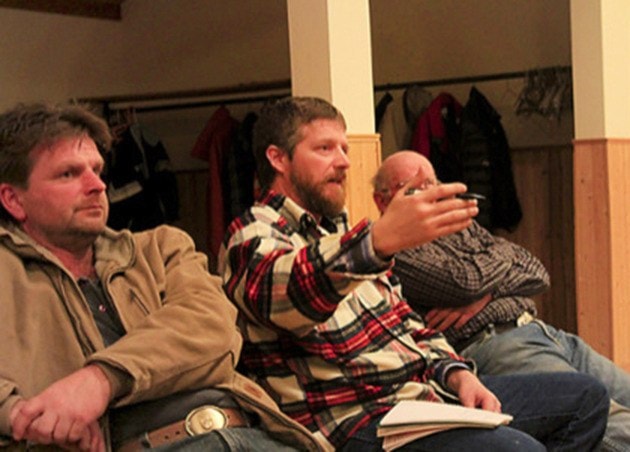Barriere Star/Journal
The Lower North Thompson Community Forest Society (LNTCFS) finished a series of five community meetings during February to get input to help develop a long term vision for the Lower North Thompson Valley.
“Basically, we wanted input from the communities we represent (McLure, Louis Creek, Barriere, Chu Chua, and Little Fort) in developing a long vision/plan for our organization,” said Community Forest rep Mike Francis. “This input will ultimately affect what strategies, projects, roles, and investment decisions we make into the future.”
Meetings were held in Squam Bay, Chu Chua, McLure, Little Fort and finally Barriere on Feb. 20.
The Barriere event was in the Lions’ Hall, with the evening starting off with a tremendous meal prepared by chef Bob Sorenson provided for invited guests. At 7 p.m. the hall quickly filled with many residents from area communities.
chef Bob Sorenson provided for invited guests. At 7 p.m. the hall quickly filled with many residents from area communities.
LNTCFS president Harley Wright, forester Mike Francis and Hank Cameron from the Cherryville community forest group facilitated the session.
The audience was asked to make comment on each of the following subjects related to the LNTCFS over the next 25 years:
• Invest in communities
• Wait for investment opportunities
• What can the LNTCFS do for your area?
• Feedback /suggestions
• Invest in expansion
• Invest in forest
• Invest in education
Participation was active and informative, with the subject sheets pinned onto the walls quickly filling with suggestions and requests. Wright says the information gathered from all five meetings will now be compiled and reviewed by the LNTCFS board of directors, and the findings will then be made public.
Asked if the current yearly grant program would be affected, Wright said there will continue to be grant funding available each year of $30,000, with 50 per cent going to bursaries, and the balance going to applicants from the five communities for initiatives that improve the lifestyle of those residing in the area.
